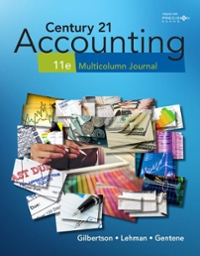Final Exam MgtAPFA June 2020 This exam consists of 2 mini case studies. Answer all questions and show your calculations. Submission to be in Microsoft Word and sent to the assignment file in Teams only. Case 1 (22 marks) Your boss has asked you to evaluate the performance of two competitors. You have obtained the following data on the competitors and on the industry. The company's operates on a 365 day per year schedule Company A Asset turnover Cash total debt coverage Current ratio Debt to total assets Earnings per share Gross profit margin Inventory turnover Price-earnings ratio Profit margin Receivables turnover Return on assets Return on common shareholder's equity Times interest earned 1.0 times 30% 0.7:1 56% $0.98 74% 6.8 times 50.3 times 14% 11.4 times 12% 30% 15.3 times Company B 1.0 times 20% 1.1:1 72% $1.37 60% 7.9 times 24.3 times 11% 9.8 times 9% 26% 7.9 times Industry 0.9 times n/a 0.8:1 81% $1.08 58% 8.3 times 32.2 times 8% 9.3 times 7% 26% 5.3 times a) Both companies offer customer credit terms of net 30 days. How successful are both companies at managing their accounts receivable? What is their average days for collection? Use the ratios to support your discussion. (4 marks) b) How successful are both companies at managing their inventory? What are the average day number of days in inventory? Use the ratios to support your discussion. (3 marks) c) Which company is more solvent? Use the ratios to support your discussion. (3 marks) d) To your surprise, you notice that Company A's gross profit margin is much higher than both Company B and the industry average. What are 2 possible reasons for this? (4 marks) e) Which company do investors believe has greater prospects for growing earnings and dividends? Use the ratios to support your discussion. (3 marks). f) Based on all your analysis above, recommend which company you would rather be CEO of? Justify your recommendation. (5 marks) Case 2 (24 Marks) Case 2-Questions 1. If Albert were to use $80,000 of his cash from the business to pay off some of his trade and other payables, how will this alter his current ratio, quick ratio, and debt-to-total-assets ratio? (6 marks) 2. Albert is trying to keep his inventories at a minimum with only $10,000. However, another plumbing and heating contractor is going out of business and is selling his inventories, valued at $100,000, for only $60,000. (a) Albert's son, who is not presently an owner of the business, is considering buying the inventory for cash and, in return, would gain a part ownership in the business (equity). How would this transaction modify the company's current ratio, quick ratio, and debt-to-total-assets ratio? (6 marks) (b) Instead of having his son become a shareholder of the business, Albert borrows a working capital loan from the bank for $60,000 at 10% interest. How would that decision affect the ratios identified in (a), as well as the times-interest-earned ratio? (6 marks) (c) If Albert were to borrow the $60,000 on a long-term basis, how would this decision alter the ratios identified in (a), as well as the times-interest-earned ratio (6 marks)







